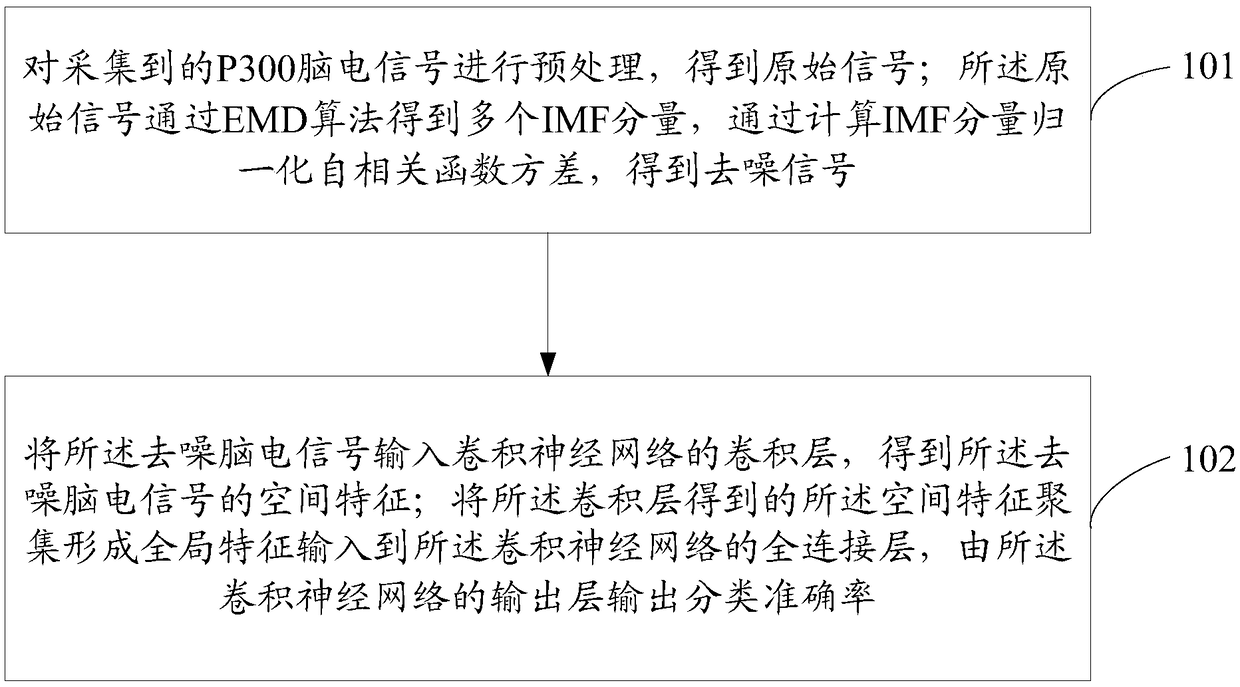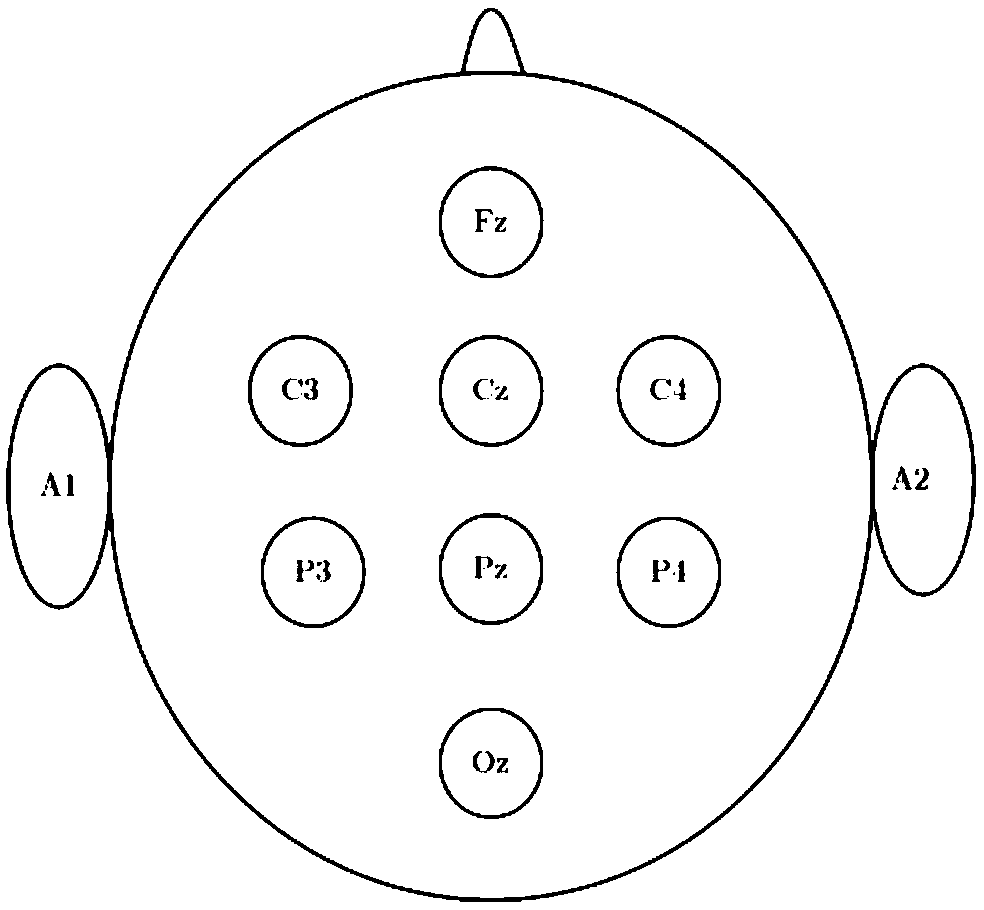Spatial auditory induction P300 electroencephalogram signal recognition method and device
An EEG signal and auditory-induced technology, applied in the field of algorithm research, can solve problems such as poor recognition results and prone to severe overfitting
- Summary
- Abstract
- Description
- Claims
- Application Information
AI Technical Summary
Problems solved by technology
Method used
Image
Examples
Embodiment Construction
[0071] The following will clearly and completely describe the technical solutions in the embodiments of the present invention with reference to the accompanying drawings in the embodiments of the present invention. Obviously, the described embodiments are only some, not all, embodiments of the present invention. Based on the embodiments of the present invention, all other embodiments obtained by persons of ordinary skill in the art without making creative efforts belong to the protection scope of the present invention.
[0072] figure 1 It exemplarily shows a schematic flow chart of a method for identifying spatial auditory-induced P300 EEG signals provided by an embodiment of the present invention. The method mainly includes the following steps:
[0073] Step 101, preprocessing the collected P300 EEG signal to obtain the original signal; the original signal obtains a plurality of IMF components through the EMD algorithm, and calculates the variance of the normalized autocorre...
PUM
 Login to View More
Login to View More Abstract
Description
Claims
Application Information
 Login to View More
Login to View More - R&D Engineer
- R&D Manager
- IP Professional
- Industry Leading Data Capabilities
- Powerful AI technology
- Patent DNA Extraction
Browse by: Latest US Patents, China's latest patents, Technical Efficacy Thesaurus, Application Domain, Technology Topic, Popular Technical Reports.
© 2024 PatSnap. All rights reserved.Legal|Privacy policy|Modern Slavery Act Transparency Statement|Sitemap|About US| Contact US: help@patsnap.com










